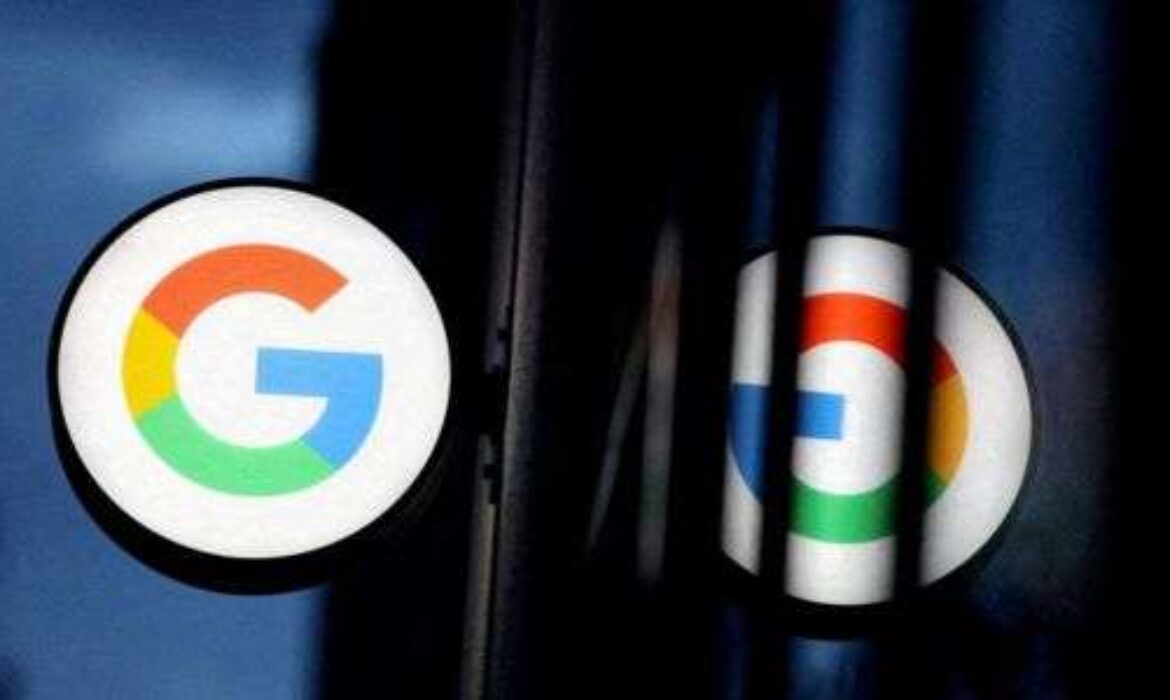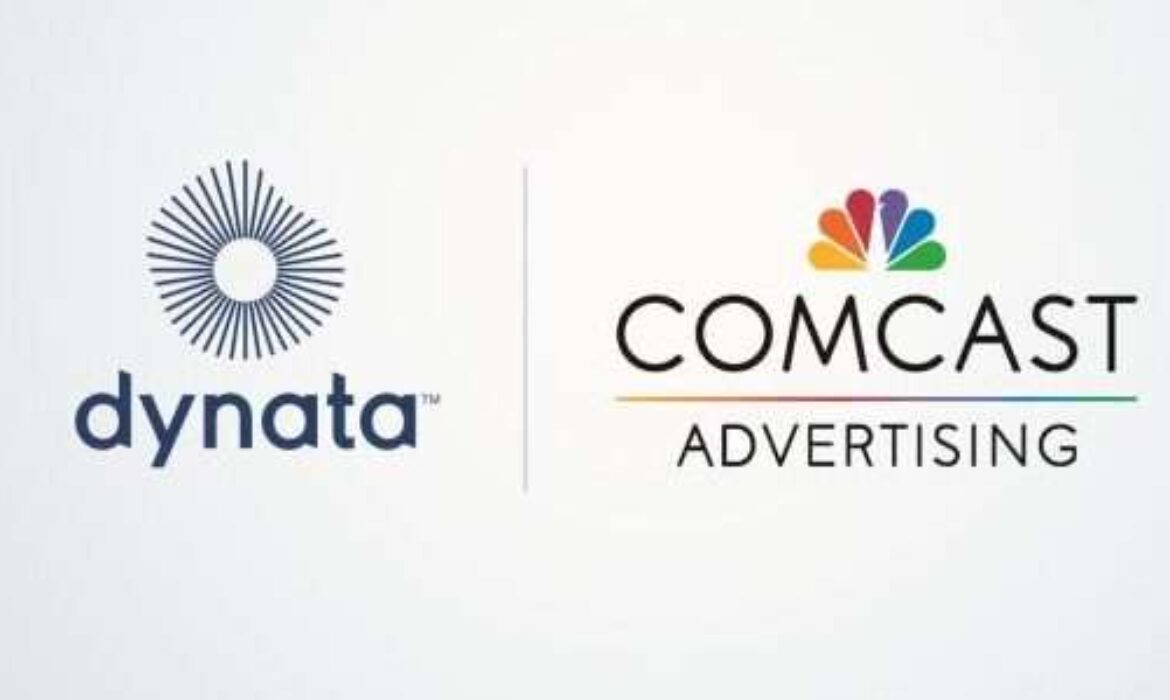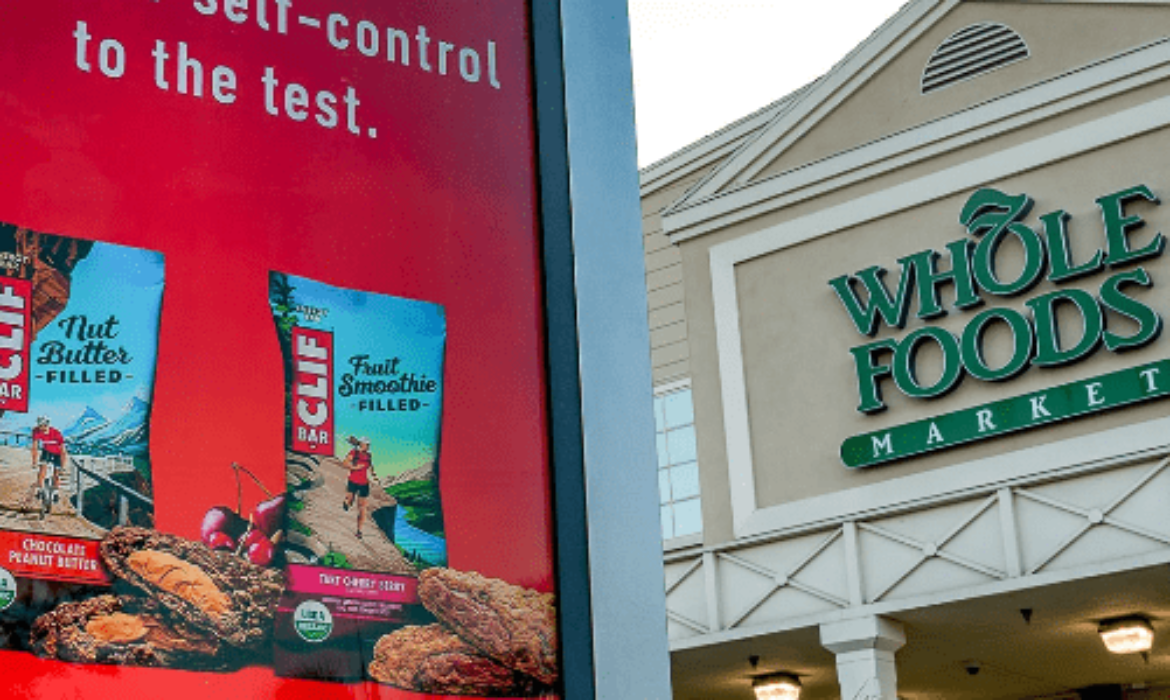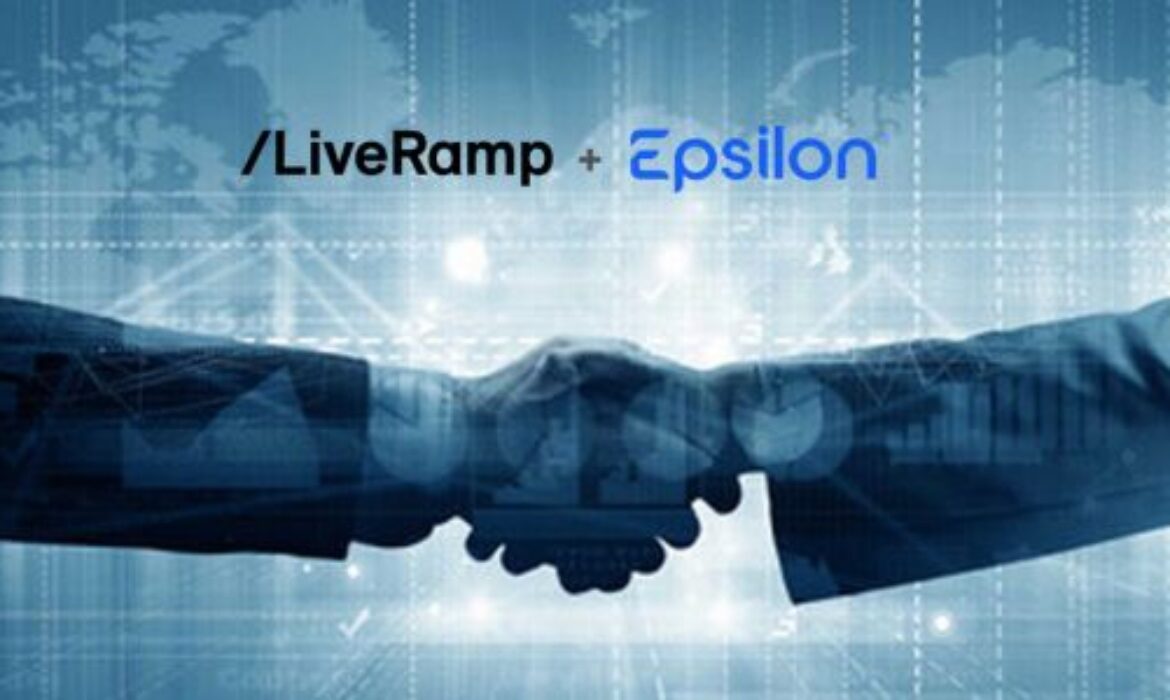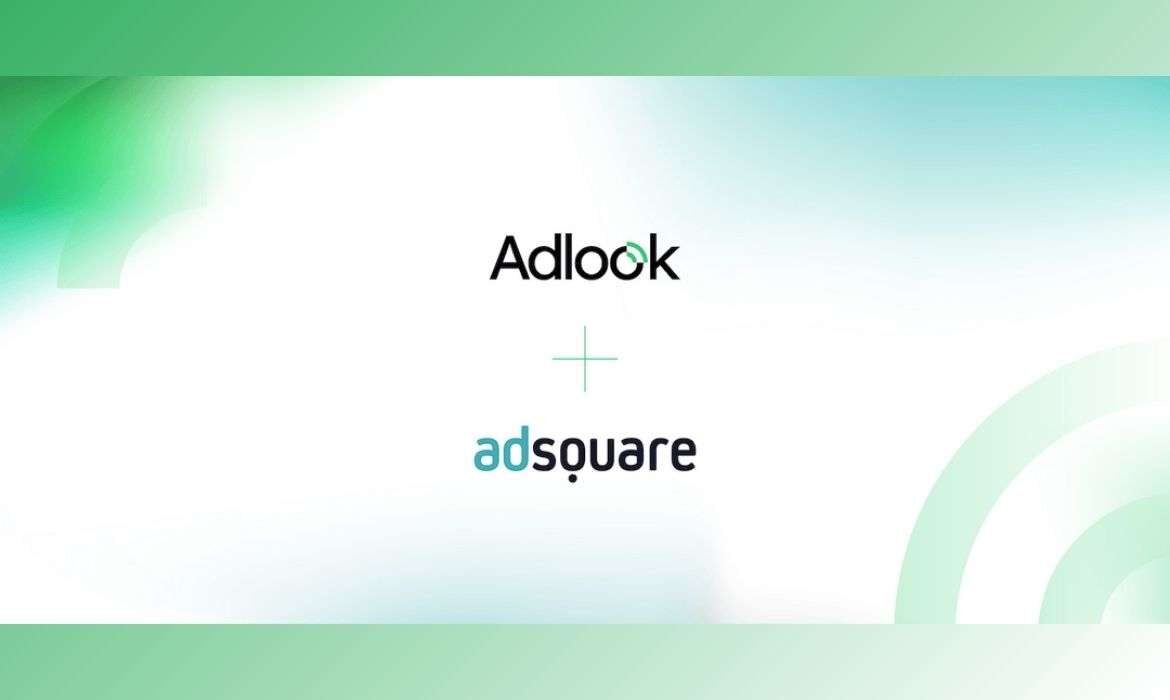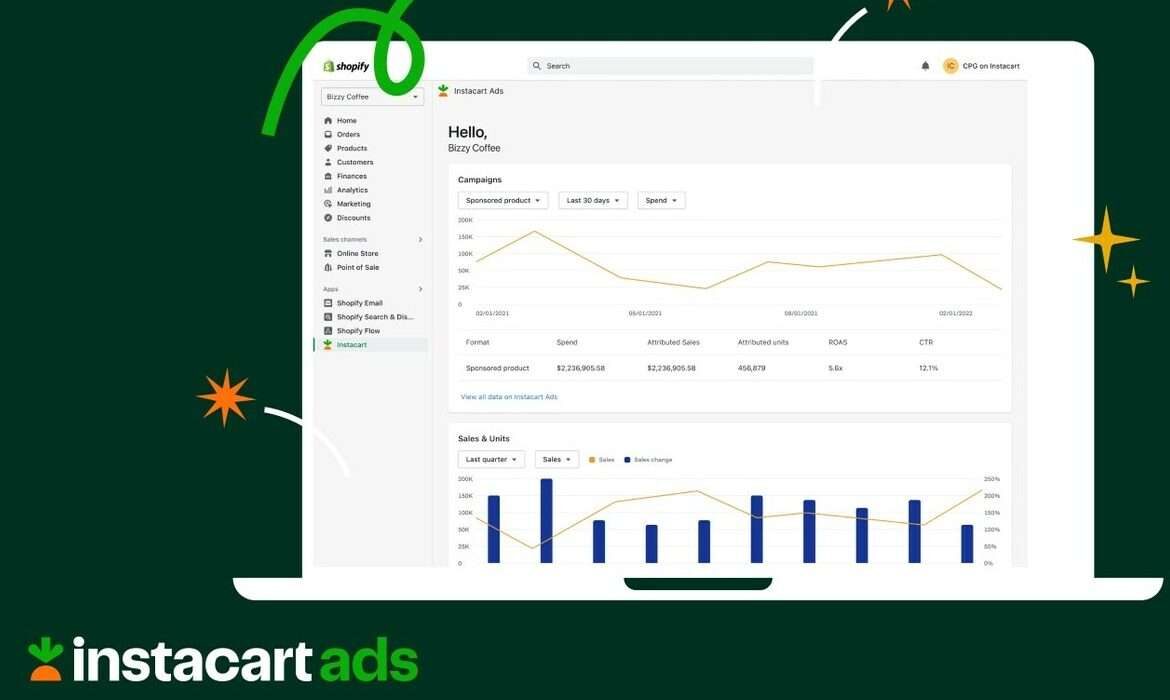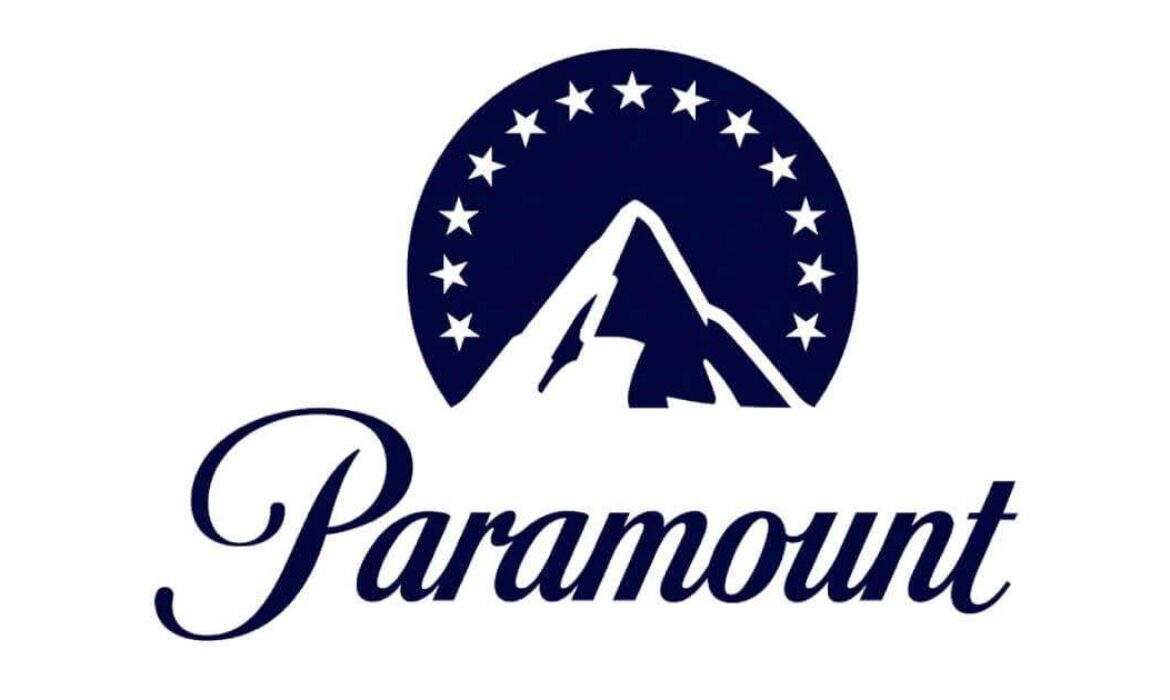US Govt. vs Google: Google Accused of Breaking Antitrust Laws
The commanding search engine Google is currently engaged in a civil lawsuit in Washington, where it is facing its greatest legal challenge yet. It is accused of breaking American antitrust laws. The tech business which is synonymous with online information searching, has used its enormously effective search engine to create a large industry encompassing cloud computing, advertising, and YouTube. The Alphabet-owned business grew up when antitrust regulation was less strict. This is especially against IT companies who create creative and frequently free methods for people to browse and utilize the internet.
The Department of Justice’s (DOJ) complaint focuses on two allegations: Google Search and whether the business utilized illegal agreements to oust competitors and harm customers and advertisers in the process. Google pays businesses billions of dollars to be the browser’s default search engine. In recent years, attempts to regulate Google and other digital titans have fallen short. In the absence of regulations, the government is attempting to regulate web competition and restrain internet gatekeepers using antitrust laws that date back 113 years. The trial’s verdict is expected to have effects that far beyond Google’s operations. It will reveal whether US regulators’ attempts to put Google’s practices on the radar and control the market will be successful.
Why is Google facing an antitrust lawsuit?
In a lawsuit filed more than three years ago, the DOJ and 38 states accused Google of illegally maintaining a monopoly in the online search and advertising sectors. In terms of market share, Google holds around 90%. The government further asserts that it upholds its supremacy by entering into limited contracts with phone and browser manufacturers including Apple, Mozilla, Samsung, and Verizon. The majority of American phones now come pre-installed with Google’s search engine, which the government claims is unlawful. Pre-installing or marketing competing search engines is prohibited per Google’s distinct contracts with Android-based mobile partners.
The DOJ claims that Google excludes competing search engines through these arrangements. Additionally, the government claims that Google’s billions of dollars in payments to partners have prevented rival search engines like Microsoft Bing and DuckDuckGo from gaining sizable market share. According to the DOJ, Google’s strategy of forcibly preloading its services onto smartphones running its Android software assisted the internet giant in keeping a monopoly. The states also contend that Google did not fully integrate Microsoft’s Bing into its well-known advertising engine, Search Ads 360. They contend, however, that Google favors advertising on its own platform and directs advertisers’ money there. This is accomplished by forcibly denying marketers the chance to promote choices that would best aid them.
Read More: Google Unveils Fresh Consent Management Rules for EEA and UK
What harm do Google’s agreements bring?
According to the Department of Justice, Google’s exclusive agreements with Apple and other parties restrict competitors from successfully vying for search market share or enhancing their products. Other businesses, like Microsoft, are unable to conduct enough searches to enhance their goods since Google freezes up all browsers and receives all inquiries. According to the authorities, it offers Google an unfair competitive edge. Due to Google’s agreements, innovation is further stifled because the firm is not required to enhance its search engine in order to retain market share. The DOJ also claims that Google increased the cost of advertising on its search sites by abusing its monopoly power.
How is Google countering the allegations?
Google claims that by giving browser providers what they want—a single default search choice for users—through its agreements with Apple and other parties, it fosters competition. Google claims that its commercial tactics are accepted and legal. It claims that the arrangement is comparable to a cereal manufacturer paying retailers to stick their cartons at eye level when it charges to appear in Mozilla’s Firefox or Apple’s Safari. Both businesses select Google because it consistently outperforms competitors rather than under the influence of revenue sharing or other inducements. Because consumers can alter their settings to change the default search engine, Google argues that the agreements do not preclude its partners from giving other search engines.
Google claims that users of Android smartphones can choose another search engine instead of the one that comes preloaded on their device. But because so few users do so, it cannot be interpreted as evidence of exclusive practices but rather as customers sticking with the better product. The leading search engine has additionally asserted time and time again that it faces many successful rivals in online search. The business cites TikTok and Amazon as thriving competitors. Google claims that despite the fact that they do not run general-purpose search engines, users go to these competing websites to find goods and content instead of using Google. The California-based business has added that the government is using faulty logic to single out the business due to its notoriety. The business thinks its success is a result of producing the best search engine.
Kent Walker, Google’s chief legal officer said,
We look forward to showing at trial that promoting and distributing our services is both legal and pro-competitive.
Read More: Google Boosts Performance Max with URL Contains Targeting Tool
What does the government need to prove to prevail in the trial?
The government must demonstrate that Google controls the economic sectors at the center of the case through monopoly power. They will attempt to persuade the judge to adopt a definition of a search engine that is rather rigid. They will also attempt to persuade the judge to disagree with Google’s claim that the search engine market is occupied by websites like Amazon and social media platforms like TikTok. The more competitive the market, the simpler it is for Google to claim that it lacks monopoly strength.
Additionally, the government must demonstrate that Google’s business relationships significantly lower competition between search engines. They must demonstrate that it prevented them from striking comparable agreements with device manufacturers and acquiring new clients. The DOJ will likely need to demonstrate how these company activities directly or indirectly affected consumers. This is highly likely to influence the judge’s decision to hear antitrust complaints.
What is the future for Google if it loses?
The decision might diminish Google’s importance and impact in the technology sector if it loses this case. There can be substantial repercussions for the business. It might restrict Google’s ability to contend in the market and reorganize the balance of power in Silicon Valley. The U.S. and its state partners are not seeking a monetary fine. Instead, they are asking for an injunction that would prevent Google from carrying on with the allegedly anticompetitive tactics. The firm could be disbanded by the court as a remedy. However, another trial will determine Google’s fate if the court finds that the firm violated the law. The DOJ could also request that Google be prohibited from entering into exclusive distribution deals. In doing so, it will allow competing search engines a greater presence on consumer electronics.
Paul Gallant, a tech-policy analyst at Cowen Washington Research Group stated,
Breaking up the company over unlawful payments to equipment manufacturers seems unlikely relative to the harm.
What does U.S. antitrust law say?
It is not against the law for a business to enter into an agreement with one client that excludes others. Such exclusive agreements are typical and receive little regulatory attention. When a firm lacks market power, it is unable to significantly impact the competition. However, if a large and strong business stops competitors from entering the market, exclusive agreements may be illegal under antitrust laws.
The U.S. – Microsoft Antitrust Trial
In 1998, the government filed a lawsuit against Microsoft. The company was acquitted of attempting to monopolize the market for internet browsers for Windows systems. In the court case, the DOJ won. It opened the door for competitors like Google and Facebook to succeed in the future. The trial court held that Microsoft had combined Internet Explorer with Windows OS and illegally attempted to obstruct Netscape Navigator. According to the DOJ, Google imitated Microsoft’s strategy from the 1990s. They state that it was in order to establish and preserve its own dominance in internet search and advertising. The comparison, according to Google, is incorrect.
Read More: Antitrust Complaint Filed Against Google in the EU!
McCann Content Studios Unites Social and Creator Capabilities
McCann has announced McCann Content Studios. It intends to offer businesses worldwide the capability of integrated social commerce, influencer marketing, and social media marketing. This new studio will include performance monitoring, audience development, creator relationships, and creative services. It will include comprehensive social and creator strategy and execution in a single organization. It will help streamline the process for customers working on social and creator-led campaigns. The network’s social and influencer strategy skills, as well as those for social creative ideation and content creation, social audience, connection tactics, and activation, influencer content co-creation and production, performance measurement, and optimization, will all be housed at McCann Content Studios. The addition of expertise from ITB and McCann LIVE should help the unit get off to a solid start.
McCann Content Studios
McCann Content Studios will implement the innovative influencer agency ITB from IPG. It was established in 2006 and has offices in London, New York, and Los Angeles. For clients like Unilever and Mastercard, the agency has a proven track record of success in leveraging influencers to promote brand platforms. The studio will also incorporate the global social practice, McCann LIVE. It has influenced the social policy of businesses like Converse in the US and Aldi in the UK.
As the distinctions between social media and the creator economy become more hazy, the new content studio is positioned as a full-service provider. The expected expenditure on influencer marketing would increase 3.5 times faster than spending on traditional social media ads. The ongoing Hollywood strikes may also encourage more creators to look for endorsement deals when productions come to a standstill. Customers, however, continue to rely on creative and engagement trends generated from popular Gen Z apps such as TikTok.
Read More: Red Havas ME Launches Influencer Marketing Initiative “SWAY”
The new unit leadership
The agency has chosen Amit Sutha to lead McCann Content Studios as president and global chief client officer. He will report to Daryl Lee (CEO). Sutha has had a global career spanning continents. Most recently, he served as Global Chief Client Officer and Global President of Performance & Campaign Content at Mediabrands Content Studios. Sutha has built both creative and media firms into leadership positions in their industry. His work at Mediabrands, which combined the best in media, storytelling, talent, data, and collaboration, significantly changed the concept of creative media content.
McCann and McCann Content Studio have promoted Monica Tailor, formerly the Global Director of McCann LIVE, to Chief Social Marketing Officer. Under Tailor’s direction, McCann LIVE swiftly established itself as an essential component of McCann’s core client offering, fusing brands with culture in exciting and unique ways. She developed a brand voice and brand storytelling that maximized social attention and conversions, assisting McCann’s integrated Aldi team in becoming internationally known.
Crystal Malachias, who was previously SVP of Global Growth & Innovation at ITB, has been named Global Head of Influencer at McCann Content Studios. She has extensive experience in influencer marketing and has worked with Hearst, and Say Media, and helped launch Refinery29 in the UK.
Here’s what they said
McCann global CEO Daryl Lee said in a statement,
Brands are increasingly interacting today in social communities in dialogue with fans, creators, and influencers. McCann Content Studios will provide our clients with a way to participate in the creator economy and co-create with them without losing their brand’s unique perspective and social voice, getting the best of both worlds.
He further added,
We have some of the industry’s very best leading McCann Content Studios. Amit is a content entrepreneur with a proven track record of commercial success. Monica is a pioneer of brand-driven social marketing for some of the world’s most socially impactful brands. Crystal is a trailblazing influencer marketing talent who understands the power of creators to shape culture and advocate for brands. Together, they represent a powerhouse of expertise that will help guide brands to new frontiers of co-creativity
Read more: 10 Game-Changing AI Tools for Digital Marketing in 2023
Dynata and Comcast Partner for Accurate Media Measurement
The largest provider of first-party data for insights, activation, and measurement in the world, Dynata, has reached an agreement with Comcast. According to the arrangement, Comcast data will be licensed and involved in Dynata’s offering of advertising solutions. AudienceXpress, one of the companies from Comcast, uses analytics to deliver omnichannel advertising. More than 300 million people have access to it nationwide. The Effectv ad sales division and the FreeWheel platform for ad management solutions are some further brands.
Dynata-Comcast Advertising Join Hands
As a result of the agreement, marketers will be able to evaluate the success of their marketing initiatives across broadcast, cable, streaming, and addressable television for the first time using a combination of the precision and depth of Comcast’s aggregate viewership data and Dynata’s real-time survey data. By combining these solutions, marketers can measure the effectiveness of their TV advertising using a single source, agreed-upon, panel-based approach. This is compared to how well video assets perform on average across all screens and gadgets. The collaboration highlights both businesses’ commitment to advancing and quickening development in audience-based measurement across media channels. Additionally, it will give advertisers the ability to calculate their cross-screen media investment with a lot more assurance.
A compelling narrative can be created by marketers and creative experts to engage their audience and make a lasting impression. The expanded coverage of Dynata by Comcast’s representative footprint improves the stability and dependability of the inputs utilized to report effectiveness as measured by the shift in customer’s perceptions of the advertiser. A more detailed narrative about the best channels to use and how to more effectively tailor messaging deployment for the greatest engagement and lasting impact is also portrayed thanks to the wider reach.
Read More: Bloomberg CPMs Soar 20% With Transition To First-Party Platform
Here’s what they said
Larry Allen, VP & GM, Addressable Enablement, Comcast Advertising said,
We’re very excited to support Dynata in their efforts to enable marketers to better measure the impact of their media investment and understand consumer perceptions, favorability, and intent. Our ecosystem is stronger when marketers and media owners have a clear understanding of how cross-media campaigns perform and how their brand messages impact consumers.
Eric Sandberg, managing director of Dynata’s global advertising solutions business added,
Partnering with Comcast to enhance our advertising solutions product suite is a strategic investment in our commitment to deliver innovative products that help our customers make practical marketing decisions through the highest quality and scalable passive television viewership data sets. This partnership reflects Dynata’s commitment to delivering customer-centric solutions that enable more accurate insights, smarter strategies, and more effective campaigns.
Read More: Basis Tech-FreeWheel Partner for Direct Access to Premium CTV Inventory
Vistar Media Enhances DOOH Advertising with Retail Inventory Package
With the release of its ground-breaking retail media targeting solution, Vistar Media, the top worldwide provider of programmatic technology for digital out-of-home (DOOH), is poised to completely transform the advertising environment. Vistar is launching Retail Inventory Packages to give marketers access to bundled, retail-specific DOOH inventory. Additionally, it will use a single deal ID to offer highly targeted marketing efforts at scale across big shops.
Vistar’s Retail Inventory Packages
These creative packages are made up of a variety of on-site displays found both inside and outside retail spaces. It will ensure that marketers interact with customers when they arrive at the store, browse, as well as at the precise moment of purchase. For optimum quality exposure, impact, and accuracy for brands, Vistar has worked extensively with its media owner clients to check each DOOH screen is indeed on-premise at the specified locations.
The packages provide access to well-known stores including Walmart, Walgreens, Whole Foods, Kroger, Shop Rite, CVS, and Albertsons for customers using Vistar’s DSP (demand side platform) or any of its omnichannel DSP partners.
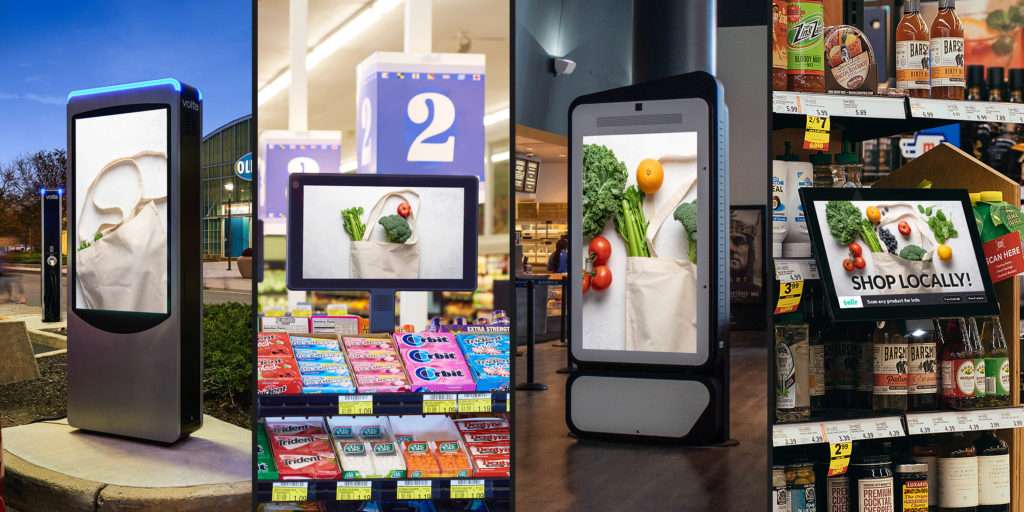
Image credit- Tasty Ad
Read More: Vistar Media and Broadsign Partners To Optimize Programmatic DOOH Transactions
Achieving Omnichannel Marketing Success
Inventory Packages
Gaining access to expertly curated inventory packages that would otherwise be challenging to target at scale within, outside, and adjacent to big box retailers
Comprehensive Reach
Connect to more than 25,000 DOOH screens in the US’s top shops.
Hyper contextual messaging
Advertisers can do this to increase relevancy both inside and outside of a retail footprint.
Specific Location Targeting
By focusing on inventory at key stores, you may achieve exact location targeting and increase relevance at the moment of purchase.
Reliable Partners
Inventory from dependable retail partners provides businesses confidence that their advertisements will appear on premium, brand-safe screens in locations where goods are sold
Consumer packaged goods (CPG), personal care, and financial services marketers can all benefit from Vistar’s retail inventory packages. It is ideal for those wishing to carry out co-branding and shopper marketing strategies. It includes on-premise marketing campaigns, targeted promotional initiatives, and more. For instance, a beauty brand wants to advertise its limited-edition holiday gift set. It can deliberately target screens within a retailer’s locations around the country sold exclusively at that store. With this, the brand can ensure their holiday product receives the most exposure among nearby and on-premise customers,
Here’s what they said
Lucy Markowitz, SVP of U.S. Demand at Vistar Media said,
The ability to present actionable messaging at and around the point-of-sale, in high-value and precise retail locations, is increasingly becoming a necessary component in driving consumers from consideration to purchase. This new tool provides marketers with the ability to meet consumers where the majority of transactions still take place – in-store – with thoughtful, action-driven messaging in the real world, at the moments it matters most.
Read More: Vistar Media and Ten Square Collaborate for Immersive DOOH
LiveRamp – Epsilon Pave Way for Privacy-Compliant Advertising
Publishers now have a mechanism to provide authorized advertising that complies with privacy laws thanks to a partnership LiveRamp has established with the leading worldwide provider of advertising and marketing technology, Epsilon. Epsilon improves user privacy while empowering brands to access targeted inventory and publishers to increase revenue.
LiveRamp’s Authenticated Traffic Solution (ATS) and Epsilon’s PubLink
The new capacity makes use of technologies from both organizations’ respective firms. Publishers can link first-party user data with LiveRamp’s unified identity architecture using the company’s ATS. Additionally, it permits privacy-conscious, advertising on validated inventory. ATS uses LiveRamp’s pseudonymous identification RampID to provide addressable inventory without the use of third-party cookies or mobile identifiers. It makes it possible to promote to actual individuals in browsers like Chrome, Safari, and Firefox.
PubLink leverages a publisher’s hashed authentication data to recognize site visitors in a way that protects their privacy and is powered by Epsilon’s identification solution CORE ID. It stands in for a site visitor and can be used later on by advertising to target particular consumers with messages. Epsilon’s CORE ID and Ramp ID transactions are now interoperable, allowing ATS publishers to make their verified content available to more advertisers and demand-side platforms. Additionally, LiveRamp users can continue activating Epsilon Digital by using RampID to programmatically access authenticated inventory. It is planned to make it possible for publishers to identify verified customers without the use of cookies and to open up more revenue-generating inventory to offer more individualized ad experiences.
Additionally, the agreement enables publishers to connect to Epsilon Digital’s advertiser demand, servicing Epsilon’s clients including worldwide brands and those of its parent business, Publicis Groupe. Additionally, the collaboration makes implementation easier without requiring extra configuration, resources, or costs. It also complies with privacy laws everywhere.
Read more: Zeotap Data Joins TikTok to Enhance Targeting And Boost Ad Campaign
Benefits of publishers adopting PubLink and ATS
Cost-free and simple execution
Because PubLink and ATS are interoperable, publishers that currently have ATS enabled can install PubLink without paying additional costs or using other configuration resources.
Future-ready
Publishers can plan and construct their advertising strategy sustainably in anticipation of third-party cookies and other signals.
Privacy and Compliance
LiveRamp and Epsilon’s solutions prioritize privacy by design while paying attention to national, regional, and international privacy rules.
Here’s what they said
Chad Peplinski, Chief Media Officer at Epsilon said,
We believe in solutions that benefit everyone across the open web, with privacy being of utmost importance. Our collaboration propels the industry forward, and our work with LiveRamp will offer immediate benefits to publishers, advertisers, and site visitors alike. By prioritizing privacy at every step, our partnership allows publishers to access our industry-leading solutions and realize their monetization advantages without requiring any additional technological or financial investment, ensuring that user data is secure and protected.
Travis Clinger, SVP, of Activations and Addressability at LiveRamp said,
Facing a complex macroeconomic climate and big-picture shifts like signal deprecation, publishers must be dynamic and prioritize sustainable, forward-looking strategies. Publishers can leverage authenticated identity to better monetize their inventory, and LiveRamp’s partnership with Epsilon connects their authenticated inventory with even more advertiser demand. I’m thrilled to continue our commitment to interoperability by now supporting Epsilon’s PubLink with ATS in addition to The Trade Desk’s UID 2.0 / EUID and Google Display & Video 360’s PAIR via an add-on module.
Read More: LiveRamp – Pinterest Team Up For Enhanced Global Integration
Adlook – Adsquare Join Forces for Advanced Brand Growth Solutions
Adlook, a deep learning-powered platform for next-generation brand growth, has partnered with Adsquare. It is a platform for worldwide location intelligence. Marketers will receive comprehensive solutions that promote brand expansion and ensure performance as part of the collaboration. Given the changing face of the sector, the alliance also responds to the desire for privacy targeting. Advanced Deep Learning technology from Adlook and location-based targeting know-how from Adsquare work flawlessly. Additionally, it establishes a fresh standard on the market for precise targeting and privacy-first solutions.
Adlook – Adsquare Collaboration
The efficacy of cookie-less, ID-free, and privacy-compliant targeting is increased by this dynamic partnership. Adlook’s market-leading Deep Learning technology gives brands access to its algorithm. It self-optimizes in real-time, according to the particular KPIs of each campaign. With the help of Adsquare’s ID-free audience targeting technology, such performance is currently boosted. Additionally, it provides a level of depth in geo-contextual audience profiles that is unmatched, boosting the success of campaigns and guaranteeing that messages are delivered with the utmost relevancy, ultimately resulting in higher engagement.
This relationship offers advertisers an unparalleled level of specific, meaningful engagement without ever jeopardizing customer privacy in a time when relevance is everything.
Read More: Dentsu-Microsoft Forge AI Powered Alliance for Agency Brands
Here’s what they said
Luca Filardo, global head of solutions management at Adlook commented,
Location intelligence is more than a buzzword; it’s a revolution in creating meaningful brand-consumer connections. Adding Adsquare to our future-proof and privacy-safe targeting capabilities was the natural step towards allowing us to serve any sort of campaign across any audiences. Proximity applied to sophisticated Deep Learning and DCO capabilities will bring enormous value to marketers who want to leverage the full power of programmatic advertising. We are thrilled to partner with Adsquare and add a valuable solution for our marketers.
Tom Laband, CEO & co-founder at Adsquare said,
We take pride in expanding our data offering to encompass a broader spectrum of DSP partners, addressing the surging demand for privacy-conscious targeting solutions. Our Adsquare datasets help you to reach specific groups of people based on their location, making your ads more relevant and allowing them to send personalized content to people’s devices. Proximity targeting by Adsquare is designed to respect privacy regulations by not using cookies or mobile IDs. This means you can effectively reach your target audience while keeping their privacy protected.
About Adlook
Adlook is a multinational media technology firm focusing on solutions with 0% ad waste and assured media performance. Using industry-leading Deep Learning technology, its cutting-edge cookieless DSP enables the open web’s next-generation brand growth. Adlook is dedicated to privacy and sustainability, functioning under the two guiding principles to provide a safe, eco-friendly environment for brand-consumer interactions. Its goal is to build meaningful connections with customers at the right times without ever compromising the level of their involvement.
About Adsquare:
The largest independent collection of location data produced from SDKs, Adsquare is the worldwide Location Intelligence Platform for the open web. Its technology integrates real-time mobility data from gadgets all around the world while still abiding by the tightest data privacy laws. It enables marketers to improve multichannel campaign planning, programmatic activation, and real-time evaluation using cutting-edge location information. Professionals from all over the world can seek unmatched insights into the intricate dynamics of actual customer behavior. This is thanks to its location intelligence expertise. Renowned international brands and platform clients in 30 countries benefit from its experience. Adsquare, which has its global headquarters in Berlin, Germany, has nine offices spread out across the Americas, Europe, and Asia.
Read More: Driving Brand Success: In Conversation with Vishal Shah from EssenceMediacom
New ‘Instacart for Shopify App’ Revolutionizes Merchant Advertising
The most prominent grocery technology firm in North America, Instacart, recently unveiled a brand-new Instacart for Shopify app. The novel solution gives Shopify’s up-and-coming consumer packaged goods (CPG) firms access to Instacart Ads. Shopify businesses can now seamlessly connect to Instacart Ads’ tools, insights, and automation. Over 1400 retail banners throughout North America are partnered with Instacart. With this innovative integration, Instacart continues to support emerging brands’ rapid growth. Additionally, it would provide Shopify merchants access to crucial sales information and self-serve ad goods. This indicates that many CPG brands on Shopify are probably generating revenue through the Instacart Marketplace without taking any additional action.
Instacart and its partners
The announcement strengthens Instacart’s dedication to assisting up-and-coming firms in driving omnichannel growth. Instacart simplified the design of Ads Manager in the previous year so that marketers could quickly select an aim and receive customized, enhanced suggestions for the ad forms. To achieve their corporate objectives, they included specific targeting and bidding alternatives. The business has increased its measurement capabilities. In order to assist brands in discovering the real effect of their Instacart Ads campaigns, it also provides sales lift testing and A/B testing. The average increase in sales for Instacart’s brand partners is above 15%, and in certain situations, it is even higher.
Instacart Integration with Shopify for merchants
For the first time ever, Shopify merchants can promote their company with Instacart Ads by using the Instacart for Shopify App. By offering insight into their Instacart sales directly in Shopify, where they already oversee the rest of their business, the new Instacart for Shopify app aids merchants in better understanding their business. With this visibility, businesses can take action to expand their reach and success among Instacart users.
The Instacart for Shopify App enables retailers to simply create an Instacart Ads Manager Account, view high-level ad performance analytics, and track their overall sales on Instacart. This integration serves as further evidence of Instacart’s commitment to providing new businesses with the resources and market knowledge they require to develop and engage with customers at the point of sale.
Read More: Roku-Shopify Revolutionize TV Ads By Enabling On-Screen Purchases
How will it work?
A retailer can create a free Instacart Ads Manager Account after installing the Instacart App on Shopify. Standard onboarding takes less time thanks to features like automatic product recognition.
- The Instacart for Shopify app displays information about Instacart sales and KPIs from marketing campaigns.
- Retailers can track the performance of their brands across several channels in a single location.
- Use the best digital marketing tools available in Ads Manager to expand their brand.
- Use tried-and-true ad formats, such as Instacart’s featured product ads.
- Give CPG businesses prime digital shelf space throughout the Instacart Marketplace.
Here’s what they said
Ali Miller, Vice President of Product Management at Instacart commented,
With our extensive catalog across more than 80,000 retail partner stores in North America, we believe Instacart has one of the best platforms to help emerging brands grow. Combining our scale with Shopify’s merchant network creates a really powerful discovery tool for brands looking to understand their impact across different channels. With the Instacart for Shopify app, brands can learn about the sales they’re already driving on Instacart, and immediately take action by setting up Instacart Ads to supercharge discovery and sales.
Antonio Silva, Director of Partnerships at Shopify said,
At Shopify, we are committed to forging partnerships that empower our merchants and keep them on the cutting edge. Wherever there is an opportunity to connect merchants and buyers together, Shopify is there first. By offering access to efficient and effective advertising solutions through Instacart’s integration with Shopify, our merchants gain valuable insights about sales data, advertising opportunities and performance across Instacart’s marketplace directly within their Shopify dashboard.
Read More: Kofluence Unveils Kofinity, An Assured Path to Brand Partnerships
Paramount Elevates CTV Advertising with Interactive Product Suite Expansion
With three interactive CTV ad experiences, Paramount ANZ is extending its premium advertising alternatives offering. The goal is to create an environment where viewers interact with advertising in addition to simply watching it. On the big screen, Paramount ANZ hopes to provide a portal into the future of interactive advertising.
The approach builds on AdSelector’s, powered by Innovid, success. The program is one of the premium advertising options available from Paramount Australia and New Zealand (ANZ). They aim to encourage users to interact directly with video material using their remote controls. To do so, the platform accentuates already-present video content and displays a full-screen video gallery. Around a typical TVC, a CTA overlay emerges, urging viewers to participate using their remote. The viewer is then presented with content selections and ad experiences to choose from and play via AdSelector expanding to full-screen.
Read More: Disney+ Hotstar Amp Brand Outreach With CTV Targeting
The Three Interactive CTV ad experiences
Canvas Gallery
A TVC features an interactive scrollable gallery called Canvas Gallery displaying several products. It effectively highlights several products at once in a high-end, interactive setting. Additionally, it is beneficial to display a variety of products in a high-end interactive setting. The solution is ideal for campaigns with several touchpoints or for launching a wide range of products. Additionally, it is perfect for retail occasions like Christmas, Black Friday, or the launch of new products. A typical advertisement will be scaled down to fit a branded skin so that users of the remote may navigate through up to five panels of message in a single break.
Interactive overlay
Interactive Overlay’s click-to-reveal feature adds a call to action to an already-existing TVC. With a dynamic layer to a typical brand TVC, it provides a complementing interactive overlay that strengthens already strong brand creativity. Additionally, a lower-frame interactive overlay smoothly integrates promotional messaging, codewords, and limited-time offers into existing advertisements. As the usual brand advertisement plays, it will appear over top of it so that viewers may interact with the overlay using their remote.
Expander
Through an interactive full-screen ad experience, Expander immerses viewers while surfacing a variety of brand material. It seeks to deepen and broaden a brand’s exposure and accumulated time. To immerse consumers in a brand realm like never before is the aim. It combines several material pieces, including movies and photos, to enhance the value of a typical TVC. Additionally, a conventional advertisement is surrounded by a CTA overlay. With just three to five films or images, a full-screen video gallery carousel can be launched by viewers using their remote controls. The standard video resumes after viewers close the extended advertisement.
Here’s what they said
Head of commercial innovation at Paramount ANZ Zoe Kostos expressed her excitement to introduce these new advertising options, which reflect the company’s belief in the potential of interaction on a large screen. As reported by AdNews, she went on to say,
Each product offers a unique experience, allowing our advertisers to engage audiences in new and meaningful ways. Through creative flexibility and personalised engagement, we’re taking advertising beyond a completed view and transforming it into an immersive journey that resonates with viewers.
Read More: Paramount Advertising Plans To Scale Identity With Unified ID 2.0 On CTV
LightBoxTV Extends Range with Total TV Solution for CTV Campaigns
With the addition of a full-service Total TV Solution, LightBoxTV, the top CTV planning and analytics platform, introduces the extension of its product line. This comprehensive solution, built on LightBoxTV’s patented technological platform, enables clients to rely on LightBoxTV with their media spending and benefit from a thorough managed service for executing CTV campaigns on its behalf.
What’s in it for advertisers?
Advertisers are challenged with effectively targeting consumers in a diverse setting, including BVOD, AVOD, FAST, and YouTube channels, as TV viewing shifts to streaming platforms. Media buyers that want to connect with their target consumers have difficulties in this complex CTV landscape. LightBoxTV is a trailblazer in the sector thanks to its origins as a software platform created to address these issues. LightBoxTV’s newest offering, a managed solution, combines proprietary planning software, data insights, and team knowledge. Furthermore, it aids in executing precisely targeted campaigns built around this technology-centric strategy.
Read More: Loop Media-Microsoft Advertising Forge New CTV OOH Inventory Category
The Full-Service Total TV Solution Benefits
Comprehensive Campaign Planning
LightBoxTV serves as a strategic partner, providing audience targeting and data-driven insights to develop effective CTV campaigns.
Ease of Access to the Segmented TV Space
LightBoxTV offers marketers a single point of access to manage campaigns seamlessly across a variety of inventory outlets such as BVOD, AVOD, FAST, and YouTube environments.
Campaign management and activation
LightBoxTV manages and activates campaigns. Furthermore, it also ensures smooth delivery across various platforms.
Accurate Performance Reporting
LightBoxTV offers thorough insights into campaigns’ performance, empowering marketers to make informed choices and improve upcoming campaigns.
With a variety of tailored audience packages available at launch, the system gives customers turnkey choices. These choices are in line with varied campaign objectives. Alternatively, users may partner with LightBoxTV to develop a custom plan for a particular target market. It will guarantee that their campaigns are effective.
Read More: Unlock The CTV Opportunity: What The Future Looks Like
Here’s what they said
Mark Giblin, CEO of LightBoxTV said,
Our vision has always been to simplify the complexities of CTV advertising through innovative technology and data-driven insights. With the launch of our Full-Service Total TV Solution, we are excited to offer advertisers a comprehensive and strategic approach to navigate the evolving TV landscape and deliver successful campaigns.
Read More: PubMatic Takes On DSPs in Video & CTV Deals, Aims for Direct Access
Advertisers Embrace Programmatic Advertising As Cookies Decline
The use of unreliable and mostly independent third-party cookies is coming to an end. What the industry does next is currently up for discussion. While some solutions will look at the context of a webpage, others will concentrate on interest, and some will try to develop a widely used but privacy-first ID system. Over the coming year, the majority of advertisers and agencies want to increase their programmatic spending while third-party cookies continue to be phased out. About 58% of advertisers are unprepared to operate in the cookie-less world, according to Warc’s research. The cause is cited as a lack of practical knowledge of how their work is still impacted by evolving privacy laws. Additionally, the report noted that more than 60% of marketers have reservations about reaching audiences without the use of third-party cookies.
Cookies Phase Out Story Until Now
Google stated that it would stop enabling third-party cookies in the Chrome browser in 2021. Other browsers rapidly followed suit after this. The advertising industry was rocked by this news, leaving marketers unsure of what to do next. However, companies are recognizing the chances to monetize the advertising industry through their ecosystems, despite any potential downsides. Advertisers realize the advantages of properly framing their advertising and connecting with people by meeting their requirements. Additionally, they can guarantee user data security and foster transparency. By enabling end users to place more trust in companies, the improved security has enabled advertisers to forge closer connections with consumers.
Around 95% of the web is expected to anonymize with the phase-out of third-party cookies. It has greatly increased prospects for new ecosystems to arise by leaving a vast hole on the internet. However, due to several unanticipated circumstances, the phase-out was extended until 2023. The UK and the EEA’s revised privacy laws, Google’s testing of the Federal Learning of Cohorts (FLoC) and Privacy Sandbox, and a high level of user demand for enhanced transparency are the causes.
Google is now planning to roll out this modification gradually, starting with 1% of Chrome users in early 2024. Developers will be able to evaluate their preparation for the wider shift during the initial phase, which will act as a practical test. A considerable change in advertising tactics is necessary as a result of the deprecation of third-party cookies. Adversaries need to investigate alternatives to specific user tracking for targeting and measurement. It is advised to negotiate the change by utilizing first-party data, investing in contextual targeting, and working with business partners.
Read More: End Of Third-Party Cookies, What Is There For Marketers: Takeaway!
The Current State of the Programmatic Landscape
Over the previous few years, programmatic ad spending has doubled due to exponential growth. Programmatic advertising has become a major role in the dynamic world of ad technology. Since its introduction, it has been significantly advancing the advertising sector. The buying and selling of ad inventory has been streamlined and made more effective than ever thanks to its automation features. In 2023, as we reach the halfway point, a few things have changed. Advertisers should keep a close eye on a number of programmatic advertising trends to maintain an edge over rivals.
Examining Possible Replacements for Third-Party Cookies
Cookies are being resisted due to privacy issues. Publishing companies must therefore prioritize identifying options for the third party. However, research from Adobe claims that 74% of users still rely on third-party cookies, and this is worrying. However, according to a different survey, 41% of marketers still think that removing third-party cookies will be one of the most difficult tasks. Therefore, in order to prevent any interruptions to their advertising campaigns, marketers will need to find alternatives to third-party cookies.
Growth of DOOH
In the years following the pandemic, offline buying has increased. More and more individuals are going to physical stores to make purchases. The recent boom in programmatic advertising is unrestricted by cookie regulations. As a result, marketers ought to concentrate on billboard advertisements. People’s interactions with offline advertising are vastly improving. This includes interactive display ads, 3D billboards, and more. The amount spent on digital out-of-home (DOOH) advertising in the United States will increase by around 11.4 percent to almost 2.94 billion dollars by 2023, predicts Statista. This represents more than one-third of the yearly expected OOH ad spending in the US. For the first time ever, in 2023, DOOH ad expenditure will surpass the pre-pandemic spending recorded in 2019. Additional digital screens are appearing for advertisement across the nation. Programmatic strategy is well-positioned to secure a significant chunk of this spending in the upcoming years.
Building programmatic efficiency with AI and ML
The application of AI and ML is a further development in the field of programmatic advertising. Both advertisers and publishers can greatly profit from these technologies. With the help of AI, publishers can better understand their audience, increase user involvement through tailored recommendations, and automate the generation and optimization of content. This leads to scalable presentation and better comprehension. On the other side, AI and ML can quickly analyze vast amounts of data for advertisers. Campaign targeting and automation are now more successful than ever.
The growth of video advertisements.
The popularity of video commercials is predicted to skyrocket. According to Statista, expenditure on video advertising is anticipated to reach 176.6 billion dollars by the end of 2023, growing at a CAGR of 6.80%. The average ad expenditure per internet user in the market for video advertising is anticipated to be 33.13 in 2023. Additionally, connected TV spending is estimated to amount to $30 billion. Furthermore, with better-quality inventory and more straightforward measurement, programmatic video is becoming a more premium medium. Programmatic video is leading the way toward a more creative, targeted, and interactive advertising environment. In general, video advertising is growing rapidly in programmatic advertising.
Read More: And Google Does It Again, Delays Phaseout of Third-Party Cookies
Programmatic advertising without third-party cookies
Programmatic advertising has historically used third-party cookies to target particular audiences. However, the ability of marketers to follow and target audiences on the web is declining due to the gradual decline of the third-party cookie and the adoption of new privacy rules. Programmatic ecosystem scaling has also resulted in the expansion of innovative channels, including connected TV, gaming, programmatic audio, retail, and digital out-of-house.
There is a rush to define what a cookie-less future might entail with third-party cookies on their way out. Programmatic advertising will change, but its status as a crucial tool for digital marketing will endure. In 2023, Statista expects that programmatic ad spending will surpass $550 billion globally. And as technology develops year after year, programmatic advertising remains an interesting field thanks to improved software and algorithms.
According to a report, Dentsu predicts 28% and 15.2% growth rates for retail media and CTV in 2023, respectively, in emerging digital sectors. Additionally, programmatic advertising will account for 71.4% of all digital spending, an increase of 14.4%. According to a different survey by IAB Europe, 74% of advertisers, 80% of agencies, and 68% of publishers anticipate that investments in programmatic trading would rise over the ensuing 12 months. In addition, CTV has become the main growth sector, with more than 50% of stakeholders linking it to the acceleration of programming growth over the coming year.
Controlled first-party cookies are prominent in programmatic advertising trends since Google still permits first-party data. It is fantastic for locating the correct audiences on the appropriate platform at the appropriate moment and for contextual advertising. From 2023 to 2035, contextual marketing is expected to grow by 18%. However, to maximize results and ROI, marketers are playing a smart game with the distribution of their ad spend budget.
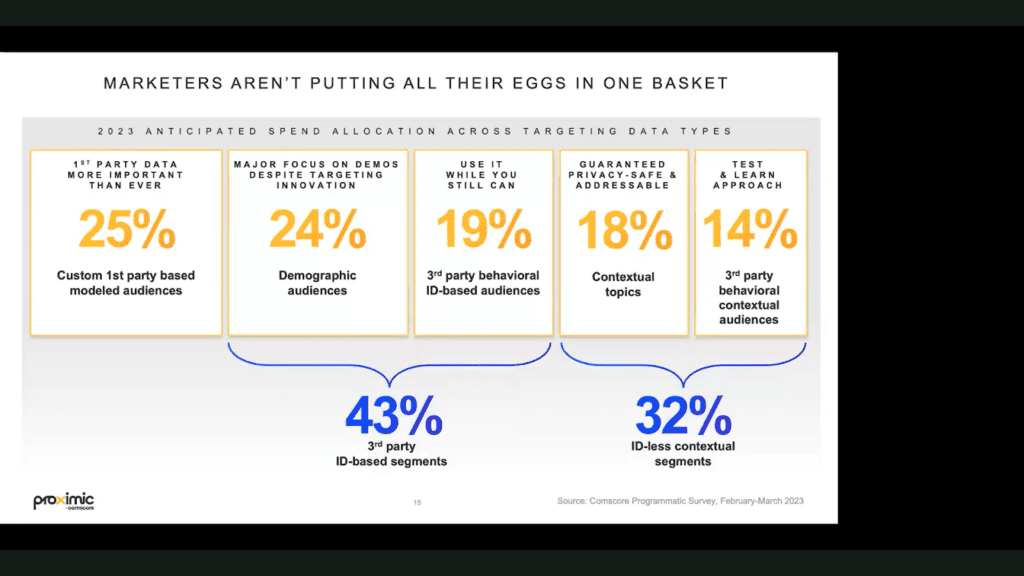
Image credit- AdMonsters
Read More: Relief To Advertisers As Google Postpones The Elimination Of Third-Party Cookies Till 2023.
Challenges facing post-third-party cookies arena
However, advertisers still experience difficulties. Lack of consistency is the biggest challenge brands face in managing media networks. They claimed there was annoyance with the quantity, caliber, and uniformity of data and reporting offered by each channel. This increased the brand teams’ efforts and made cross-platform comparisons challenging. The “walled-garden environment” that companies encounter when operating within the ecosystem presented advertisers with their second issue. They remain in the dark regarding their activations, which makes it difficult to maximize their deployment and return on investment. 44% of advertisers reported this problem.
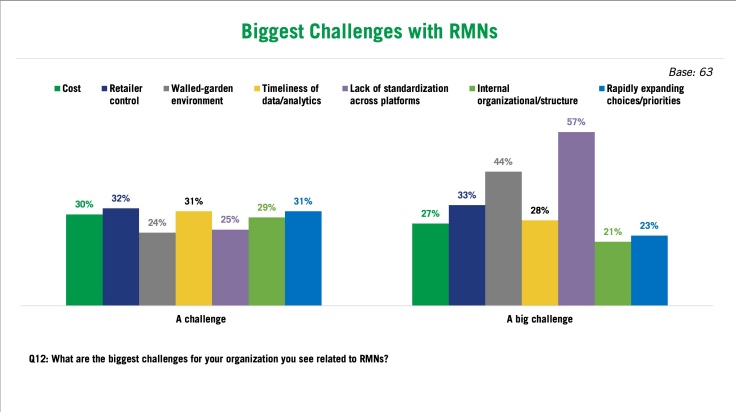
Image credit- ANA
Advertisers continue looking for alternatives to third-party tracking cookies, as cookies completely phase out starting in 2024. They are also investigating more contextual and interest-based targeting models. They include those based on images, audio, location, content sentiment, time, and weather. Additionally, they are working more closely with publishers, platforms, and tech suppliers to take advantage of shared data and insights as they push further to gather first- and second-party data to learn more about their customers. They have, however, also made several cautions about the expansion of programmatic channels.
The demise of third-party cookies marks a critical turning point for the industry. Advertisers are reacting to the novel situation. They now need to adopt cutting-edge tactics and technology to respect consumer tastes and confidentiality while retaining useful functionality. This will turn out to be the real test for them to tap into their creative side!
Read More: Google’s Phasing Out of Third-Party Cookies: A Paradigm Shift in Digital Advertising

